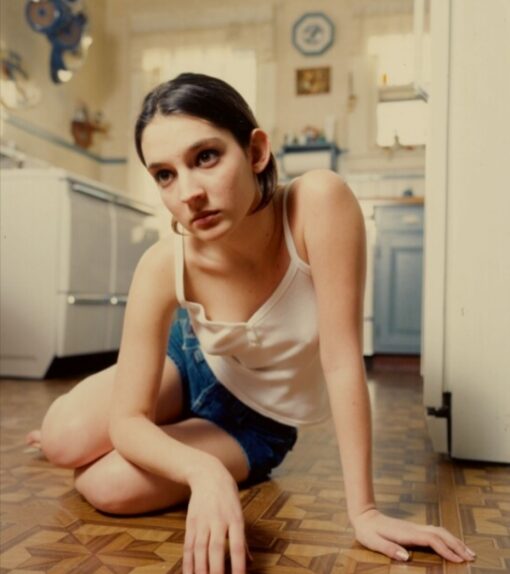The photograph below was my introduction to portrait photographer Katy Grannan. I found it…baffling. It was (and still is) compelling in ways that didn’t make sense to me. Who is this pale, somewhat awkward, young woman? Why is she barefooted? What’s going on with that gown (does it really match the wallpaper)? It looks like she’s standing in her grandmother’s parlor. There’s an awkward vulnerability to this portrait that you’d think would make it unappealing.
But it’s not. The portrait seems weirdly balanced between Who am I? and Who do I want to be? and Who do people think I am? The photograph makes you feel something, and even if you’re not sure what you feel, you still feel it. And that’s a remarkable thing.
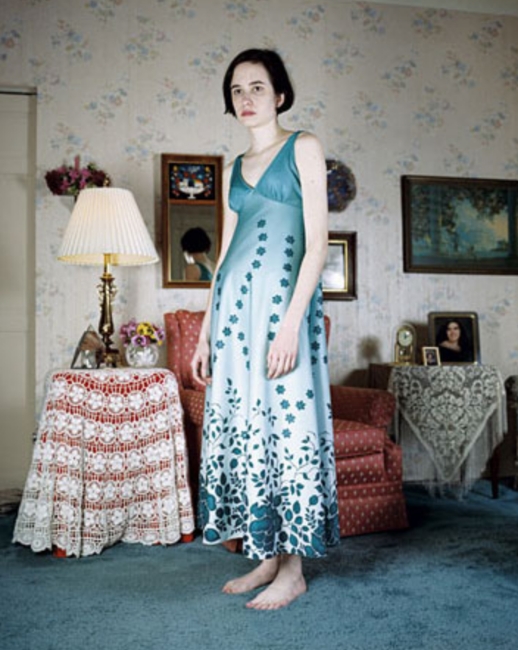
Katy Grannan was born in Arlington, Massachusetts, in 1969. At some point in her early life, her grandmother gave her a camera–a Kodak Instamatic 124. That was the start. Later she encountered the work of Robert Frank and The Americans. That changed her life; she decided to become a photographer.
She received a B.A. from the University of Pennsylvania in 1991. Two years later she took an M.A. from Harvard University, and in 1999 she earned an M.F.A. in photography from Yale University. Although it was Robert Frank who inspired her to become a photographer, Grannan’s work has little in common with his–at least on the surface. Frank’s photography in The Americans was gritty, wildly original, shocking, secretive, subversive. Grannan’s best known work to date–Poughkeepsie Journal–isn’t gritty, it isn’t wildly original, it’s not shocking or secretive, but it’s very quietly subversive.
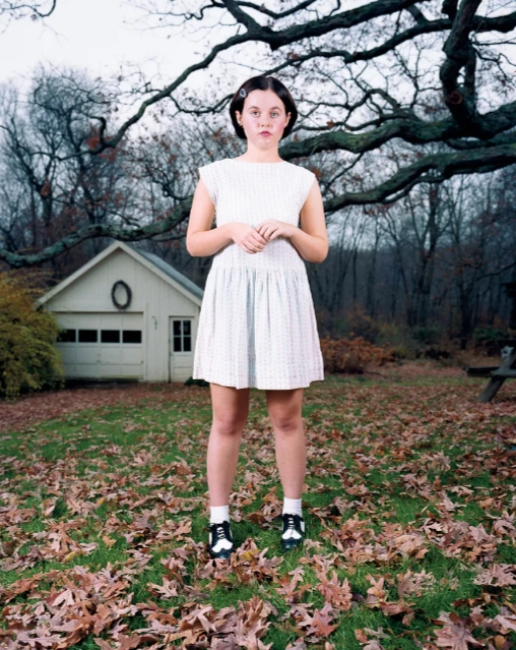
Her process for Poughkeepsie Journal was remarkably simple. She placed the following advertisement in the local newspaper, the titular Poughkeepsie Journal.
Art Models. Artist/photographer (female) seeks people for portraits. No experience necessary. Leave msg.
That’s it. Her subjects, then, are people who wanted to be photographed, people who wanted it badly enough to call and make an appointment with a stranger. Grannan would arrive at the subject’s home with her camera, a single light source, and a fan. She’d encourage the subjects to pose with as little clothing as they felt comfortable. Some remained fully dressed, some partially undressed, some nude. Grannan arranged the settings, but she required the subjects to pose themselves. This explains why they so often appear awkward and ill at ease. The entire shoot would last no more than three hours.
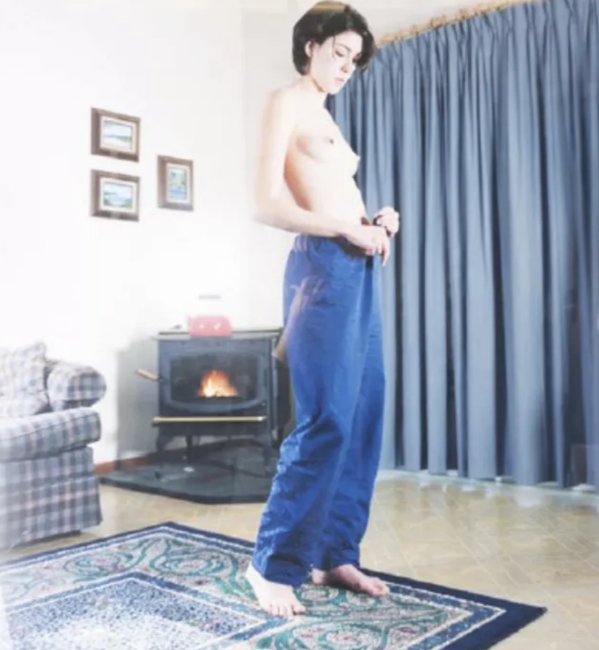
Where Robert Frank’s photos were overtly subversive, Grannan’s portraiture is more academically subversive. She’s taken the traditional portrait photographer’s approach and turned it sort of sideways by requiring her subjects to reveal aspects of themselves through their own inexperience. There’s an academic distance in her portrait; she seems to examine her subjects with the sort of clinical detachment an entomologist would approach a particularly strange beetle.
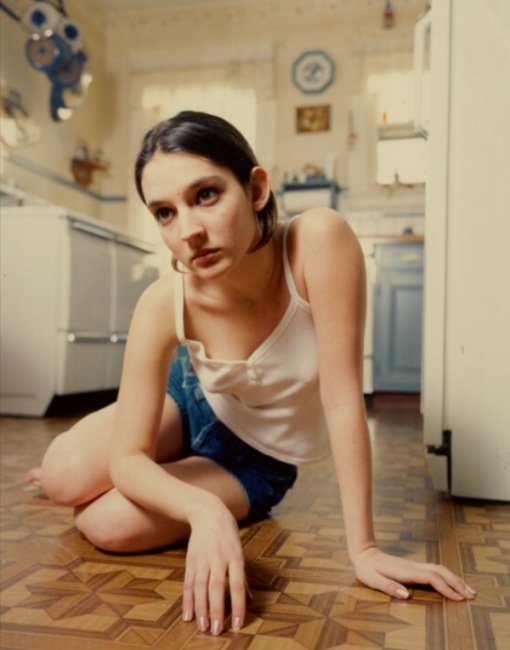
And yet, because the subjects sort of control the shoot, there’s also a strange intimacy here. It’s an intimacy created by the subjects themselves, by their wanting to reach out to the world by exposing some aspect of themselves–or, more likely, some aspect of who they’d like to be. It’s Grannan’s gift to catch those revealing, vulnerable moments.
All of the photographs in this salon are from her Poughkeepsie Journal project.

